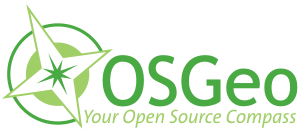Selected Presentations
Home > Presentations > Abstract details
Title
OGC WMTS AND OSGEO TMS STANDARDS: MOTIVATIONS, HISTORY AND DIFFERENCES
Abstract
This presentation describes the new OGC Web Map Tile Service (WMTS) standard and how WMTS was inspired by the OSGeo Tile Map Standard (TMS). Both standards will be described and compared, including the motivation and key differences. Since operations in both specifications can be viewed as interchangeable, most of the differences are formal or related to additional encoding options. An important functional difference is the incorporation of a query by location request (GetFeatureInfo) in WMTS.
Between March and November 2006, OSGeo developed and tested TMS. By that time, there were also other map tiles related implementations, such as OnEarth, Google Maps, etc. In 2007, the OGC WMS group received a change request to include support for tiles as part of the WMS interface standard. However, after discussion the OGC decided to define a separate standard - WMTS. In September 2008, there was a strong dialogue at FOSS4G South Africa meeting for about map tiling and good collaboration. In OWS-6 interoperability experiments, four independent WMTS developments were tested before June 2009. In March 2009 the document went to a 30 day public comment period and, once considered, the final document went to vote on September 2009; it was approved on December 2009 and released in April 2010.
TMS is a RESTful implementation. OGC has its own tradition for KVP and SOAP services and OWS Common framework. WMTS has aligned to those, resulting in a standard easier to combine with the OGC standards baseline. The group made an effort to adapt RESTful ideas into OGC and suggested a RESTful approach deeply inspired in TMS, but with less granularity to make it equivalent to other encodings. The ServiceMetadata document as a single entry point to the service makes it easier to adapt to current service catalogues and more aligned to ISO 19119.
Authors
Joan Maso - CREAF
Xavier Pons - Departament de Geografia. Universitat Autònoma de Barcelona
Raj Singh - Open Geospatial Consortium

